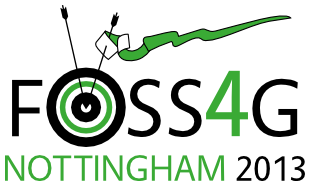Presentation
VivaCity Smart City Platform
Marco Montanari (MMo.IT)
11:30 on Friday 20th September (in Session 32, starting at 11:30 a.m., EMCC: Room 2)
Show in Timetable
Many big vendors are exploring the smart city concept explaining that the smart city is a city aware of the things happening in the infrastructures. Thus the vendors are pushing for a Smart Grid, Smart Metering, Smart Sensors and Smart Whatsoever. This makes the city look like a sick patient, being monitored in many ways with histograms, gauges and panels for the information to be read. In our opinion this is the most unnatural way to interact with city information. Historically the most used way to interact with citizen oriented information is the map. Even today, with the always more precise GIS tools, the map can be an important part of a city information management tool. The VivaCity Project is a platform for the data-driven smart city. The core of the platform consists of a map- based view of the city itself, with all the possible cartographic open data made available by the governance. Beyond that, various apps can contribute in a smart manner through a set of plugins and entry-points for various views of the city, enabling a deep and complex interaction with the city itself. This system is self-sustaining, considering that the city already contains its monitors, which are the citizens. They just need two sets of tools: a visualization tool enabling the citizens to understand what is being done at a given time, and a tool to express opinions, problems and proposals to the governance. Considering that an overly generic tool loses its meaning because it has no real target, the interaction with the governance is delegated to function-specific or target-specific apps sharing a common API. This way both governance and citizen gain benefits, having both sides creating new data all the time and interconnecting information from the city and its inhabitants: governance has the ability make decisions based on real-time citizen-driven data, while citizens have the opportunity to create new services using the provided data. Figure 1 - Part of the VivaCity Smart City Interface For instance, the APIs offered to external apps are aimed to the following areas of interest: Politics, political decisions Maintenance • • • • • • • • • Security City Info, Touristic, Cultural information Management, urbanistic information Urban events, Urban Acupuncture, social analysis Emergency Management, Emergency information aggregation from the many sources available Economic, Managerial information Environmental, Energy usage information The data shown in the interface is the sum and interpretation of the data provided by the local governments through open data, or applications created by third parties like OpenMunicipio in Italy, the OpenSpending platform by OKFN or even simply mash-ups with complex datasources, like the USGS earthquake map, or the various regional APIs for simple services or any other app enabling the citizen to participate actively to the activity of his government. Using the platform in different cities enables a normalization of the services offered by the cities, and the direct comparison and interconnection of cities through a distributed API supporting the governance to empower policies and improve citizens’ lifes.
